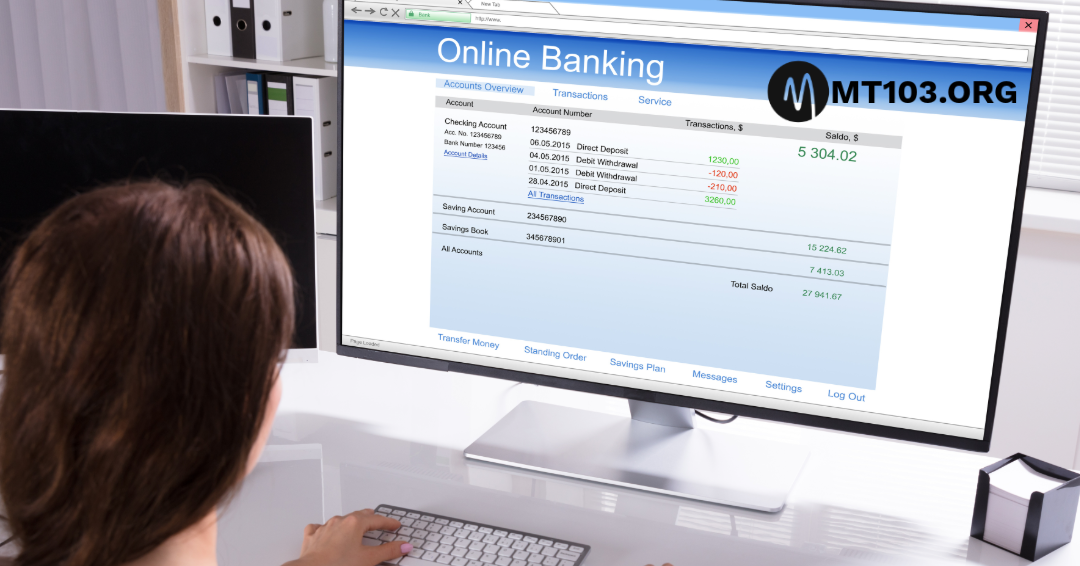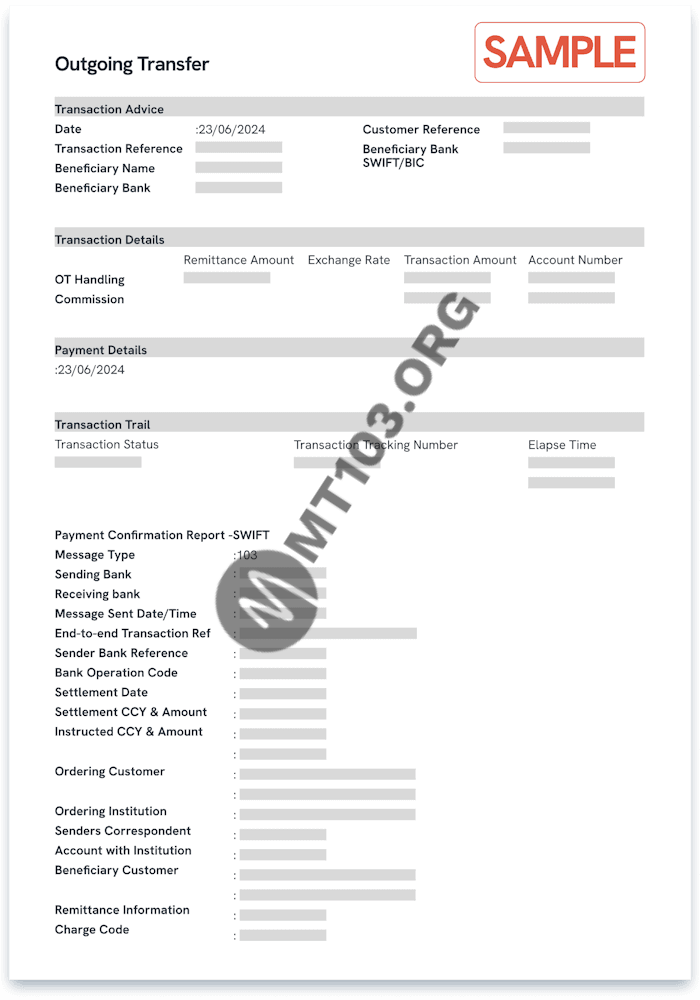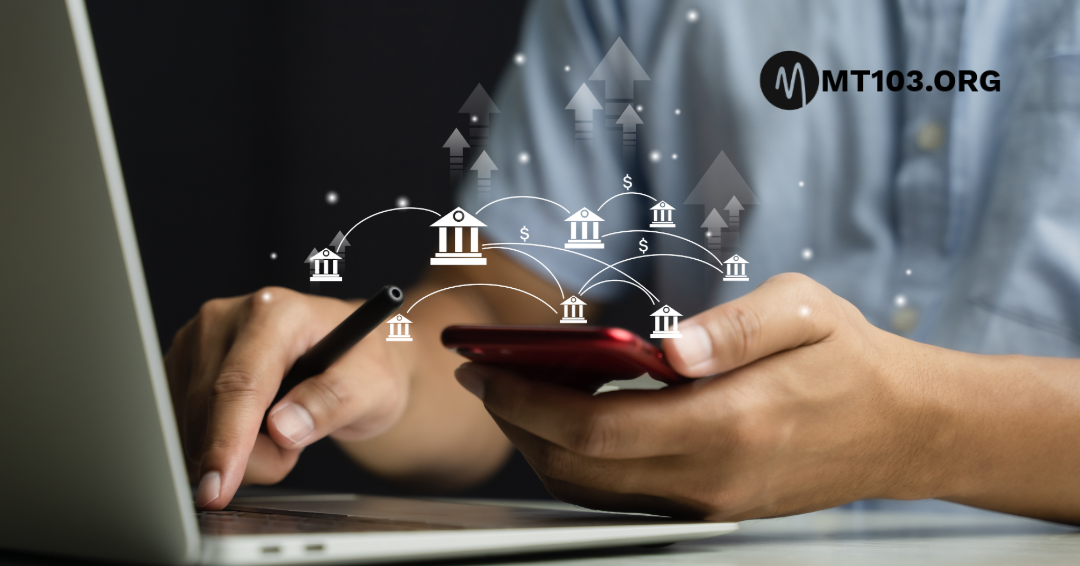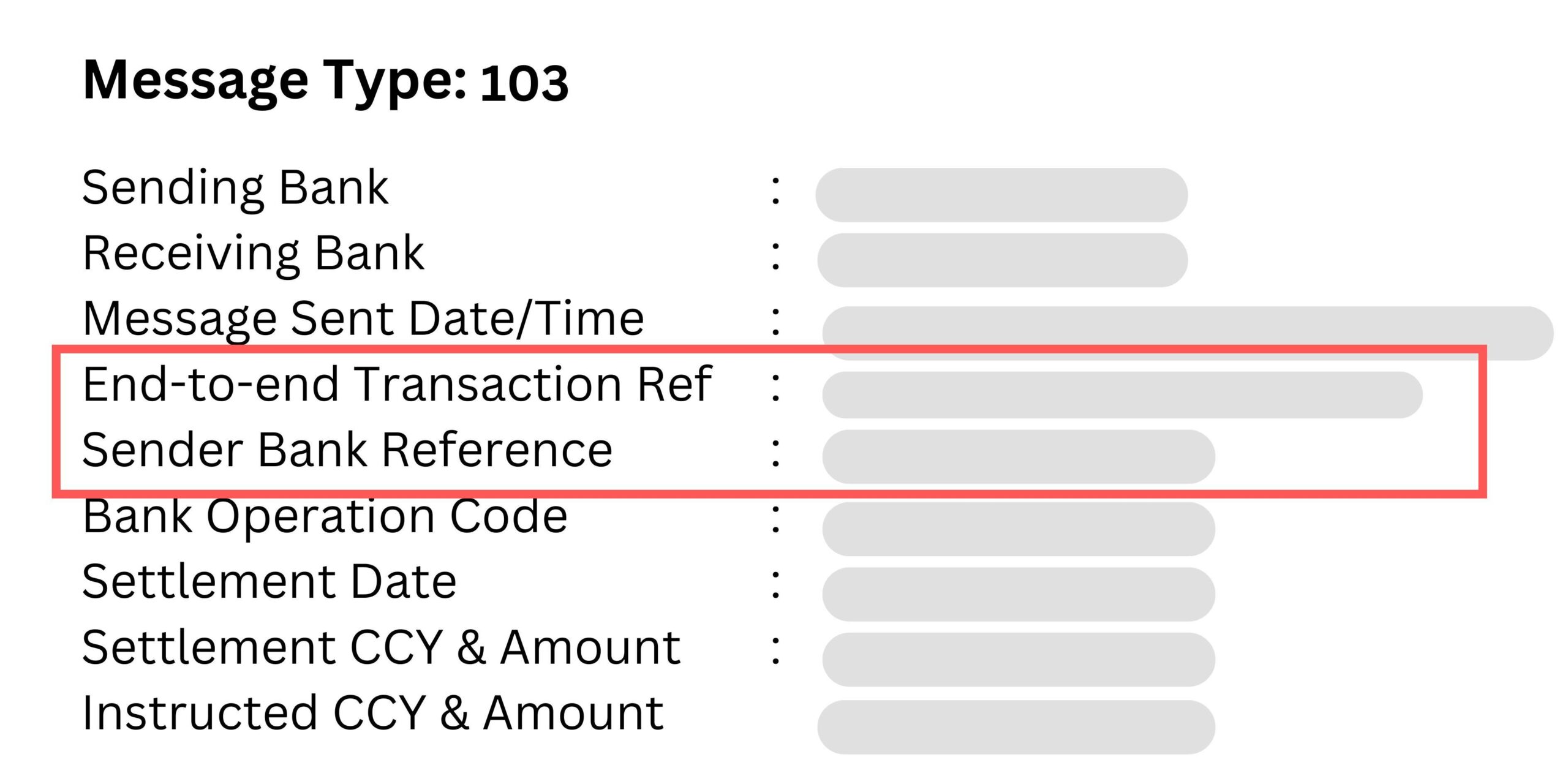Your cart is currently empty!
Tag: ISO 15022 MT
-

What Information Is on an MT103?
Many people have frequently asked “what information is on an MT103?” Well, The MT103 adheres to a standardised format that includes specific information to ensure the validity of the document.
What Information Is on an MT103?
Asking of What Information Is on an MT103, the information includes the sender and recipient’s information, the payment amount, and any additional information or instructions. It’s important that the message is accurate and complete to ensure the payment processes correctly.
Here is the common information included in an MT103:
- Payment reference, which is a unique identifier for the transaction.
- Name, address, and account details of the individual or company sending the money. The sender may be called the remitter or the ordering customer.
- Name, address, and account details of the individual or company receiving the money. The receiver is called the beneficiary.
- The sending bank’s code
- The receiving bank’s code
- Settlement date
- The amount of money being sent
- The currency in which the money is being sent
- The date the transfer was initiated
- The payment route between the banks
- Intermediary bank details (if applicable).
- Details of fees
- Who pays the fee, which can be the sender, the receiver, or a shared arrangement between both.
Example Of MT103 Document
The appearance of an MT103 that the customer gets after the request can vary by bank, but it must include a SWIFT payment message that provides tracking information for the payment destination.
What Information Is on an MT103?
Here’s an example of what an MT103 might look like.

How to Read the MT103
The format of MT103 documents can differ from one bank to another. You might find some MT103 documents straightforward to read, while others use predominantly banking abbreviations.
To help you understand them better, here is a simplified breakdown of the references and abbreviations you may find on MT103 documents.
MT103 Mandatory Tags
- TAG 20: Sender’s reference or transaction reference number, it’s Unique identifier to reference the transaction.
- TAG 23B: Bank operation code, Describes the type of banking operation:
CRED: Standard transfer, most popular and economical option, but the slowest.
SPAY: Transfer via SWIFT Pay Service Level. Faster than CRED but may have additional fees.
SSTD: Transfer via SWIFT Standard Service Level. Balanced speed and cost.
SPRI: Transfer via SWIFT Priority Service Level. Fastest option with the highest fees.
- TAG 32A: Value date/currency/interbank settled amount, Shown as date-currency-amount. For example, 250624USD2000 means a USD 2,000 payment was made on 25 June 2024. The date may differ slightly from your original transfer request due to bank processing times.
- TAG 50A, F or K: ordering customer, The payer’s details, usually the account, identifier code, name, and address.
- TAG 59, 59A or F: beneficiary customer, The payee’s details, usually the account, name, address and identifier code.
- TAG 71A: Details of Charges, This field indicates who will cover the costs of the SWIFT transfer:
BEN: The beneficiary covers all fees.
OUR: The sender covers all fees.
SHA: Fees are shared between the sender and the beneficiary.
Kindly note that tags 50 and 59 may use IBAN format if the accounts involved are in countries that use IBAN, e.g., most of Europe.
MT103 Optional Tags
Optional tags are fields that the sender can choose to add. They offer extra information, but not including them does not hinder the processing of the transaction. These include the followings:
Processing & Instruction Codes
- 13C – Time Indication: Specifies processing times. Example: /SNDTIME/ (debit time at the sender’s bank) or /RNCTIME/ (credit time at the recipient’s bank).
- 23E – Instruction Code: Specifies special processing instructions, such as /CHQB/ (pay by cheque), /CORT/ (corporate trade payment), or /SDVA/ (same-day processing).
Currency & Exchange Details
- 26T – Transaction Type Code: Indicates the purpose (e.g., salary, pension, dividend).
- 33B – Instructed Amount: If included, shows the amount requested by the customer before any conversion or deductions.
- 36 – Exchange Rate: The currency conversion rate applied.
Bank & Intermediary Details
- 51A – Sending Institution: Identifies the sender’s bank.
- 52A – Ordering Institution: If different from the sender’s bank.
- 53A – Sender’s Correspondent: The bank where the sender reimburses the receiver.
- 54A – Receiver’s Correspondent: The bank where the recipient can access funds.
- 55A – Additional Reimbursement Institution: Additional bank involved in processing the transfer.
- 56A – Intermediary Institution: A middle bank that helps process the payment.
- 57A – Account With Institution: The final bank managing the recipient’s account
Tags 52 – 57 primarily use BICs (Business Identifier Codes) to identify the involved banks.
Payment & Fee Breakdown
- 70 – Remittance Information: Notes or reference details for the recipient.
- 71F – Sender’s Charges: Fees deducted by the sender’s bank.
- 71G – Receiver’s Charges: Fees deducted by the recipient’s bank.
- 72 – Sender to Receiver Information: Additional messages between banks.
- 77B – Regulatory Reporting: Compliance codes for banking authorities.
I hope this article “What Information Is on an MT103?” is helpful, to get the mt103 software click here.
-

5 Steps to Obtain an MT103 Document
The steps to obtain an mt103 document are outlined on this article including how to do mt103 swift payment,
To perform an MT103 Swift Payment, you must first initiate an international payment through your bank or a financial institution that uses the SWIFT network, as this process automatically generates the MT103 message. After the payment is made, you request the MT103 document from your bank, as it is typically not provided unless requested. The process and cost for obtaining the document vary by institution, with some charging a fee while others offer it for free.
Steps to Obtain an MT103 Document
- Initiate a SWIFT Payment: Make an international transfer through your bank or a fintech company that processes SWIFT payments. The MT103 is generated automatically in the banking system once the payment is initiated.
- Request the MT103: Contact your bank or financial institution to request the MT103 document. This can often be done through their online banking service or by contacting customer support.
- Provide Details: You may need to provide details such as the date of the transaction, sender’s reference number, and other transaction-specific information.
- Receive the Document: Once requested, your bank will retrieve and provide the MT103 document, though this can take several business days.
Key Information on MT103 Documents
Purpose: The MT103 is a standardized SWIFT message that serves as confirmation of a payment made from your bank and contains detailed information about the transaction.
Tracking: The MT103 contains a unique identifier called the UETR (Universal End-to-End Transaction Reference) code, which helps in tracing the payment throughout the entire chain of banks involved.
When To Request: You might request an MT103 if your funds are delayed, if you need to review the transfer details, or for compliance purposes.
Take A Look At The Following Video

How Does MT103 Work?
When you initiate an international transaction, such as a telegraphic transfer or wire transfer, the software will prepare an MT103 document that includes all necessary payment details. These details include, but are not limited to:
- Your name
- Your recipient’s name
- Address
- Amount
- Currency
- SWIFT/BIC code.
The MT103 payment system securely sends this document through the SWIFT network, the dedicated messaging platform of it for financial institutions.
The beneficiary’s bank receives the MT103, verifies the information, and upon confirmation, credits the recipient’s account with the transferred funds, deducting fees as applicable. This is why you need the MT103 SWIFT payment software to personally use it for your benefit.
-

How to Track a Payment Using an MT103
Regarding how to track a payment using an MT103 SWIFT software, you can track a payment using an MT103 software, but pay attention for how to do it.
You will need the transaction reference number. This number works like a tracking code. Once you have it, your bank can trace the path of the payment

How to Track a Payment Using an MT103
If your bank uses a real-time tracking system called SWIFT gpi, they can provide live updates on where the money is during its journey. If they don’t use SWIFT gpi, they may only be able to confirm that the payment was initiated, processed, arrived, or rejected, without showing its real-time location but, don’t panic because the MT103 software uses swift GPI.
Steps to track a payment using an MT103:
- Get your MT103 document
- Find the transaction reference number
– Look at Field 20 (also known as Tag 20) or written as Sender Bank Reference
– You may also see a Unique End-to-End Transaction Reference (UETR), which is a 36-character identifier, consisting of both alphabets and numbers.

Use the reference number to track the payment:
– Enter the number into your bank or financial institution’s tracking tool if available. Below is an example of payment status tracking tool from Deutsche Bank.

If no tool is available, reach out to the banks. Keep the reference numbers ready.
How to Download MT103 Document with MT103
With MT103 software in your possession you will be uncontrolled, you don’t have to wait for your MT103 document for unending business days.
Immediately your transaction is completed, simply log into your account on the MT103 software and download the “Transfer Confirmation’ or ‘MT103 Document” whenever you need it.

If you want to track your payments you can also do that in real time in the software with few clicks, there is absolutely no need for you to scramble for documentations hunting for codes.
-

MT103 SWIFT message types
MT103 SWIFT message types are the format or schema used to send messages to financial institutions on the SWIFT network. The original message types were developed by SWIFT and a subset was retrospectively made into an ISO standard, ISO 15022. In many instances, SWIFT message types between custodians follow the ISO standard.[1] This was later supplemented by a XML based version under ISO 20022.
Composition of MT number
SWIFT messages consist of five blocks of data including three headers, message content, and a trailer. Message types are crucial to identifying content, all SWIFT messages include the literal “MT” (message type/text). This is followed by a three-digit number that denotes the message category, group and type. Consider the following two examples.
First Example Of MT103 SWIFT Message Types
MT103
- The first digit (3) represents the category. A category denotes messages that relate to particular financial instruments or services such as precious metals (6), treasury (3), or traveller’s cheques (8). The category denoted by 3 is treasury markets
- The second digit (0) represents a group of related parts in a transaction life cycle. The group indicated by 0 is a financial institution transfer.
- The third digit (4) is the type that denotes the specific message. There are several hundred message types across the categories. The type represented by 4 is a notification.
A MT304 message is considered an “Advice/Instruction of a Third Party Deal” and it used to advise of or instruct the settlement of a third party foreign exchange deal.
For example, an asset manager who executed a FX transaction with a broker would send a MT304 instruction to the custodian bank of the client.
Second Example Of MT103 SWIFT Message Types
MT103
- The first digit (1) represents the category. The category denoted by 1 is customer payments and cheques.
- The second digit (0) represents a group of related parts in a transaction life cycle. The group indicated by 0 is a financial institution transfer.
- The third digit (3) is the type that denotes the specific message. There are several hundred message types across the categories. The type represented by 3 is a notification.
A MT103 message is considered a “Single Customer Credit Transfer” and is used to instruct a funds transfer.
Below shows the different categories and the message type descriptions, the categories, message types and description Number of message types:
- 0 MT0 – System messages
- 1 MT1 – Customer payments and cheques 19
- 2 MT2 – Financial institution transfers 18
- 3 MT3 – Treasury markets 27
- 4 MT4 – Collection and cash letters 17
- 5 MT5 – Securities Markets 60
- 6 MT6 – Treasury markets – metals and syndications 22
- 7 MT7 – Documentary credits and guarantees 29
- 8 MT8 – Traveller’s cheques 11
- 9 MT9 – Cash management and customer status 21
ISO 15022 MT
Although ISO 15022 message types are different in their structure from the SWIFT MT, the naming convention remains the same, message types defined in ISO15022 “ISO15022 Data Field Dictionary – Index of Messages” ISO.
Where To Get MT103 Swift Payment Software
If you want to get the mt103 swift payment software kindly click here, use this software to pay for crypto P2P orders on any crypto exchanges, learn more here on how cybercriminals are using MT103 swift payment software to make millions. For further inquiry kindly contact support through the support button on site below.